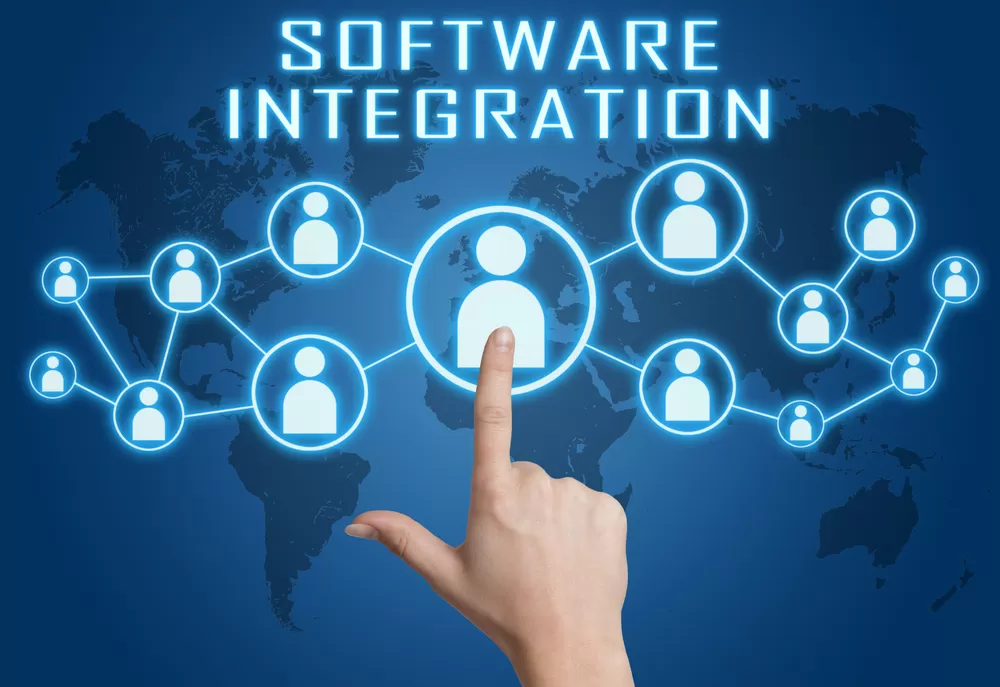Workplace communication is arguably the most important factor in employee motivation, productivity, and retention. Workplace communication creates the company culture, generates or mitigates conflicts, and sets the tone and pace for what is accepted and expected. HRIS software can be instrumental in fostering better workplace communication, but many other factors must also be taken into consideration.
Our 2025 Preferred HR Software Partners

BambooHR Software
By BambooHRCompany Name
BambooHR
Suitable Company Sizes
Small, Medium
Support Available
Android, IOS, Web Browser, Windows

Paycor HCM
By PaycorCompany Name
Paycor
Suitable Company Sizes
Small, Medium, Large
Support Available
Android, IOS, Web Browser, Windows
How to Improve Communication at Work
Effective communication in the workplace is essential to the smooth functioning of the company. Without it, employees may not be sure what they’re expected to do. Managers will be disappointed when expectations aren’t met. But what are some ways to improve communication at work?
Meet Regularly with Employees One-on-One
Making time to meet regularly with each employee can go a long way towards improving communication. Depending on the number of employees each manager oversees, these meetings could be weekly or monthly. The important thing is to meet. If employees have job-relevant questions, they can always talk to their boss during the workday.
The purpose of these meetings is to touch base, learn about the inner workings of the department, and work through any kinks. Employees will have the opportunity to discuss things that are important but may not be important enough to interrupt the manager during the regular workday.
Schedule Regular Team Meetings
While meeting with employees one-on-one is important, so is meeting with the whole team. Team meetings are a great way to ensure that everyone’s on the same page. Managers can make announcements about new projects, provide progress reports, and more. One-on-one meetings are great for individual concerns, but getting a group perspective is essential.
Get to Know New Employees
As part of the onboarding process, managers can make a good first impression by meeting with new staff members. This meeting should be something casual, like lunch. That way, it can be a real opportunity to get to know the employee. A lunch is a great opportunity for employees to meet their coworkers and get to know each other without the workplace pressures.
Give Reasons for Requests
If you ask an employee to do something, it’s a good idea to explain why. It doesn’t matter if the request is something they’re expected to do. Knowing the reasons behind it can open up communication for any additional questions the employee may have. In addition, the employee will be more motivated to perform well. The explanation ties performance directly to helping the company meet its goals. Employees are more motivated when they know how their contributions make a difference.
Establish Trust with Employees
Employees won’t be very communicative if they can’t trust their manager. Managers should demonstrate to their employees that they can be trusted. If they make promises, they should keep them. Managers who lie or take credit for employees’ work very quickly destroy any trust that exists and, along with it, good communication.
Don’t Jump to Conclusions
It can be tempting to make quick assumptions and jump to conclusions. HR professionals and managers are busy people, after all. It can be much easier to assume an employee is slacking when in reality, there’s a more complex reason that they’re struggling. Taking the time to understand what is going on with an employee can really help. Perhaps there’s something going on in their home life that’s causing stress. Maybe they’ve got multiple projects going on and aren’t sure which to prioritize. By avoiding a quick assumption, managers can help an employee de-stress and improve their performance.
Actively Listen
Listening skills are just as important as speaking skills. In fact, truly effective communication involves both. It’s essential to hear what someone is saying and really listen to understand. If necessary, ask questions! This can help ensure that everyone understands and is on the same page. Active listening is an important skill for everyone, but especially for those who manage other employees.
Cater to Different Communication Styles
Not everyone works the same way or learns the same way. It only makes sense that not everyone would communicate the same way, either. Some people may prefer in-person communication. Others might prefer a text messaging app like Slack or Google Hangouts. Others might prefer e-mail. It’s important to meet everyone at their preferred communication style and avoid jargon at the workplace. Managers can learn through observation how each member of their team communicates. If it’s hard for some employees to tell, managers can ask them directly.
Put Thought into How Feedback Is Presented
Feedback, whether positive or negative, it’s important to consider how it’s presented. If a manager is tone-deaf or aggressive, that can immediately destroy any trust and goodwill they’d built up with the employee. Consider how the feedback is delivered. If it’s negative, then focus specifically on the behavior that needs correction. Attacking the person’s character isn’t constructive, for example. The same goes for compliments.
Positive feedback can seem false or disingenuous if not delivered the right way. Managers delivering compliments should be specific about what they’re praising. Employees need to know specifically what they’re doing well just as much as they need to know what they can improve.
Establish Clear Expectations
Good communication starts with managers. They need to be able to clearly communicate what they’re looking for from their staff in order to effectively lead. If a team is working on a project, the manager should be clear about each person’s responsibilities and what the expectations are.
Use the Right Tool for the Right Conversation
There’s a time and a place for everything. This applies to workplace communication, too. While chat tools like Slack are convenient, they’re not always the best way to communicate. If there’s a chance for misunderstandings or miscommunication, it’s time to speak in person. It’s difficult to construe tone via chat or email. An in-person discussion can help clear up any possible misunderstandings.
Ask for Feedback
Employees aren’t the only ones who should be receiving feedback. Managers should also seek feedback from their staff members. Asking for constructive feedback is a great way to improve communication. Sharing constructive feedback offers opportunities to really get to the heart of a problem or a challenge.
Create an Open Environment
Employees should feel comfortable expressing themselves. Managers should ensure that they’re creating a culture of open communication. If employees fear retaliation or other negative consequences, they won’t speak up. There’s no such thing as a stupid question and employees shouldn’t feel like theirs are. Employees should be able to offer suggestions and ideas without fear of reprisal. They should also be free to admit mistakes. Managers can lead by example and admit their own when they occur.
Allow Anonymous Feedback
Sometimes, there are subjects that employees aren’t comfortable reporting. Allowing a forum for anonymous feedback can help ease their fears. Managers can more easily uncover hidden problems that are preventing their team from meeting their full potential. A HRIS may have tools for anonymous feedback in an employee self-service portal.
Maintain a Consistent Effort
Good communication in the workplace isn’t something that can be done once and then never thought about again. Consistent effort is required to maintain communication at work. Managers need to maintain a consistent example for their employees and model good communication. This helps create an environment in which employees are comfortable communicating.
Using a HRIS to Improve Communication
A HRIS can provide many useful tools that can aid in improving workplace communication. However, it’s important to ensure that you’re using those tools correctly to best improve communication. Messaging options are common features of HRIS software. But there are times when in-person communication may be better. In cases like these, managers can choose to use video communication software to communicate.
New Tools for Communication
When messaging options are available through HRIS, employees and managers may communicate and collaborate using their own devices from wherever is convenient. This opens new avenues for communication and allows employees to address concerns that they may not have felt comfortable addressing at work or that they may have rushed through. This can create an “open-door policy” and ease some of the tension surrounding communication.
Self-Service Workflows
Time-off request options and the ability to request changes to personal information are simplified means of communication that can cut out more involved communications that may not be necessary. When managers and HR professionals can respond to these changes using the HR system, it can save time and hassle. The same results can often be achieved, as well.
Removing Distance Barriers
For global workforces, HRIS messaging options can help to bridge spatial gaps and create more cohesive and collaborative teams. Employees may be able to think outside the box when tackling issues with employees that do the same job but have different cultural backgrounds. Messaging may also help to sidestep language barriers by offering translation options.
Group Messaging
In addition to one-on-one communications, group messaging options enabled through HRIS may be helpful for certain types of communications. Company announcements and information can be shared this way and group messaging can enable employers to recognize individual employees in front of their peers. This type of company-wide recognition can make employees feel good and can motivate other employees to step up so that they will receive the same type of recognition.
Video Communication
Video conferencing software is increasingly common. Some communication still requires an in-person conversation. Using a video conferencing feature of a HRIS can help recreate an in-person conversation using technology. This is especially useful if your company has employees working remotely or in different offices. Managers can communicate the same way with all staff, both those near and far.
In conclusion, HRIS can help to improve workplace communications, but cannot replace other types of workplace communication. It is important that employers work hard to establish free-flowing communication and create a team environment.
Is your business looking for a HRIS that can facilitate workplace communication? Our HRIS software match page can help you find the vendor that will best meet your needs.












